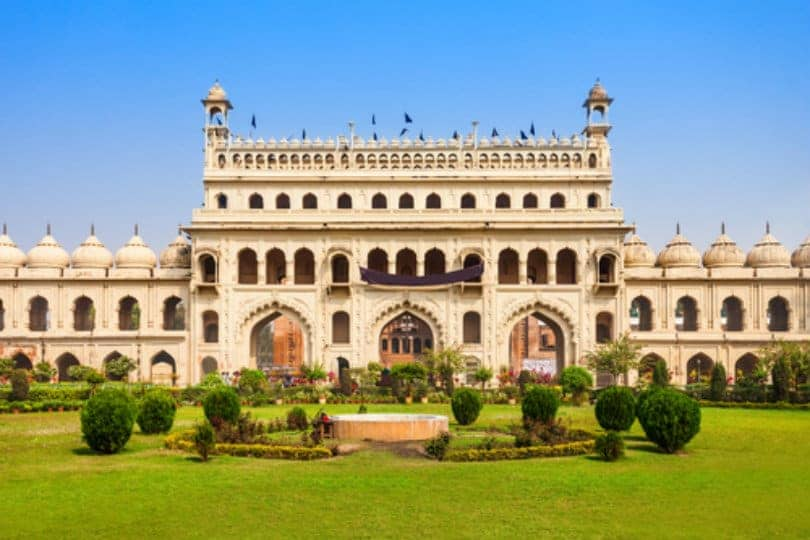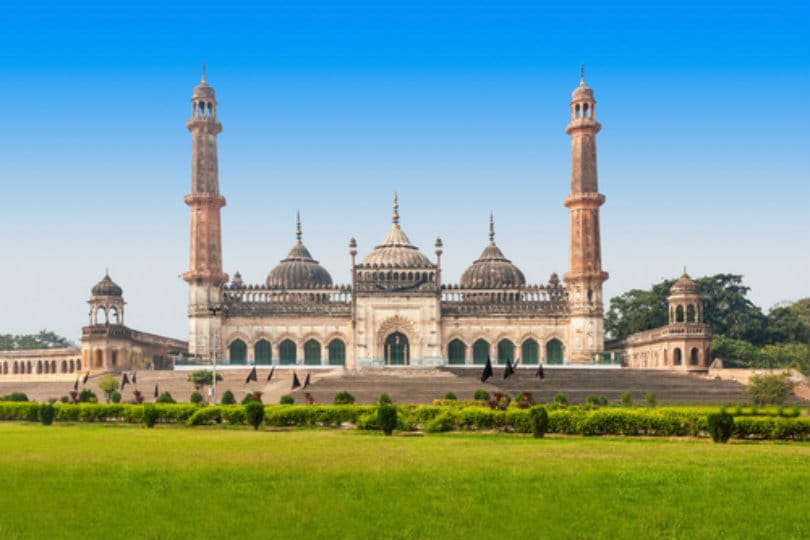Lucknow is known for its grandeur and splendor and once its pomp and glamour surpassed even that of Delhi’s when the Mughal Empire suffered a decline. Lucknow is a major economic and educational hub today but it also has a very rich history and heritage, something that is reflected through its monuments. The City of Nawabs has become a popular tourist destination because of the tourist attractions of Lucknow, most of which are comprised of historical monuments.

The Bara Imambara is huge and splendid to look at and is the cultural high point of Lucknow. It seems that the city has grown around it. The Imambara stands in the middle of a huge complex and it was built in 1785 when the region around was hit by a disastrous famine. The Nawab had ordered this Imambara to be built so that it offered employment to the people working here and later, it also became a center for relief work. The central hall of this Imambara is the world’s largest vaulted chamber which is about 180 feet wide and has no supporting pillars in the middle to hold it. It is stunning how the engineers of that era pulled off this feat. The Shahi Baoli and the Bhool Bhulaiya are other important buildings in the Imambara Complex. The visitors can visit between 6 am and 5 pm.
While the name suggests Small, there is nothing small about the Chota Imambara, except that it is also smaller in comparison to the Bara Imambara. It is also known as the Hussainabad Imambara and was built in 1837 to 1842. It was built about 40 years after the completion of the Bara Imambara. This Imambara is known for its wonderfully gilded dome and the turrets here are an exquisite example of craftsmanship. It was built by Muhammad Ali Shah and a number of his family members where then laid to rest here for generations. It is one of the most pieces of architecture that any Nawab has built in India so be sure not to miss it. The visitors can visit between 6 am to 5 pm and entry is INR 25 only.
When the Indians finally rose in arms against revolt against the British in India in 1857 the British Residency had become home to over 3000 British people, including women and children and they sought refuge when revolution blazed outside the walls. The building itself is much older and was once a British office and was made to put up the British guests of the regional owners, till it slowly started giving shelter to the British families who were seeking safety. Later, the residency fell to the revolutionaries. However, it is still very much a historical monument and the Archeological Museum of India has made a museum there.
This palace complex is often missed by the tourists but that is largely because of the hidden nature of this building is a somewhat remote area of Lucknow. The palace has now somewhat fallen into disarray but it still retains some of the past grandeur. There are several palace buildings within the complex and they were all commissioned by Nawab Wajid Ali Shah in the year 1848. The buildings that flanked the quadrangle were then converted into the harem of the Nawab. The Safed Baradari happens to be the most striking palace of all the others as it is built completely in white stone. The palace at the center was also once paved entirely in silver.
The famed Rumi Darwaza is indeed one of the finest pieces of architecture in the whole of Lucknow. It is said that the design is heavily inspired by a similar gateway that once stood in Turkey and was built by Constantinople. It is 60 feet tall and is also sometimes referred to as the Turkish gate. In earlier times, this huge gate marked the entry into Old Lucknow and today, as the city has grown around it, it still stands as a formidable landmark. The gate was built by Nawab Asaf- ud- Daulah during the 18th century, also during the time of the famine, to give employment to the locals. You can visit the Rumi Darwaza by taking a cab till Teele Wali Masjid.
The Chattar Manzil gets its name from a dome shaped roof at the top which is shaped like Chattri, or an umbrella. Although commissioned by Nawab Ghazu- ud- din- Haider, the structure was later completed by his son Nasir- ud- din, after his death. Though it was built by the Nawabs, an amalgamation of various styles could be seen here and the European style is especially quite prominent. Today, the building has been turned into a government office and although some minor changes have been made on the inside to suit modern needs, the outer façade still retains its old world charm. The building is open from 8 am to 6 pm.
The Dilkusha Kothi is one of the few monuments in Lucknow that has the Baroque style of architecture and in its day, it was one of the grandest buildings in the city. The Nawab Saadat Ali Khan built this monument in the 19th century and it was built in the image of Seaton Delavel, which was an English country house that was built in 1721. The building has a beautifully landscaped garden around it which adds to the beauty.
The Hussainabad Clock Tower stands in the middle of Chota Imambara and the Rumi Darwaza and the tower is about 221 feet tall. It was built in 1887 and the purpose was the visit of Sir George Coupert, who was the first Lieutenant Governor of the United Province of Awadh and happens to be the tallest clock towers in the country till date. The clock still proudly proclaims the time to all the citizens of Lucknow.
Saadat Ali Khan was one of the most well known Nawabs of Lucknow and it was under him that the city went through a period of immense prosperity. His tomb, though not exceptionally large, still manages to attract a number of tourists and in fact, is one of the best preserved monuments in Lucknow. It lies in close proximity to other monuments like Kaiserbagh Palace and Chattar Manzil.

The Jama Masjid is not just an important historical monument but also happens to be the spiritual nerve center of Luckow. It is where the devout Shia community comes to pray on all occasions and festivals. The construction of the building started in 1837 by Muhammad Ali Shah but was not completed in his lifetime. Later, Nawab Malika Janah took up the construction and completed it. One of the most notable features about the mosque is that although it is a Muslim place of worship, there are Jain and Hindu carvings on them and is a spectacular example of secular architecture. The mosque is open from 5 am to 9 pm.
Sightseeing in Lucknow will not be complete if you do not visit at least some of these historical monuments and you will fall in love with the rich heritage of this city.

Please go back to portrait mode for the best experience